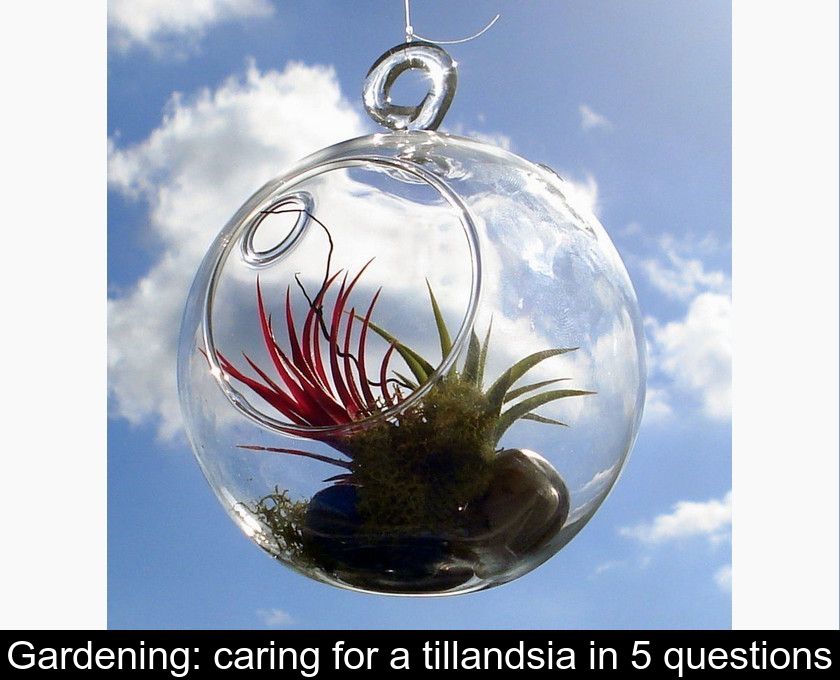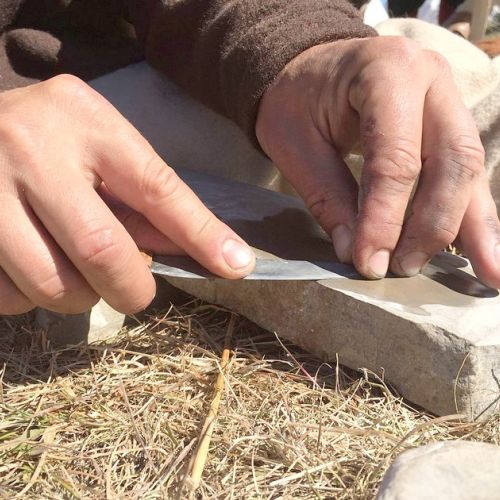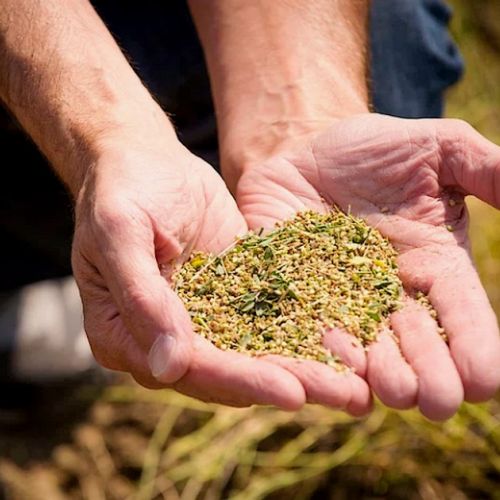Gardening: Caring For A Tillandsia In 5 Questions
An amazing plant nicknamed air plant or daughter of the air, tillandsia is an epiphytic species that does not need to take root in the ground. We suggest you discover how to take care of this plant in 5 questions.
1- Where to install this plant ?
In the genre of Tillandsias, or daughters of the air, you're spoiled for choice with nearly 400 species of plants with leathery, evergreen foliage.
These plants from the Bromeliad family, the same family as the pineapple, are quite unusual in that they don't need to root themselves in the ground to feed and grow.
So the first thing to know when you acquire a tillandsia is that it is an Epiphytic plant capable of living without soil and colonizing any support.
In their natural environment, the hot and humid tropical forests, these plants live hanging on the branches of trees, in sun or half-shade.
To make them feel at home, you should not put them in the ground or in the sand. You can instead install them in a terrarium or on a natural support (wood, coconut or stone).
Keep in mind that these epiphytic plants appreciate good light without direct sun and are cold. They do not tolerate temperatures below 6°C.
Also be careful not to place them near heating or air conditioning which dry out the atmosphere and could therefore be fatal to them.
2- What are its needs?
Because tillandsia is an Epiphytic plant (growing on other plants such as trees), it does not require any substrate for growth.
To note: some species like Tillandsia cyanea are sold in garden centers in a pot filled with orchid mix. However, the leaves at the base of the plant should never be buried or they will rot.
If the air girl you purchased does not already have one, you must provide her with a support. For example, you can attach it with a transparent nylon thread to a stone, a piece of cork, bamboo or driftwood.
Keep in mind that the support used must be dry and not retain moisture and that the thread should not be too tight. Do not use glue or nails that would be toxic for the plant.
Once installed, this plant also needs a humid atmosphere as it feeds through the porosities in its foliage. It has true moisture sensors called trichomes.
Since it is not possible to water this air plant, you must :
- to baste it with non calcareous water in hot period
- mist it once or twice a week in winter.
When basking in the spring and summer, make a contribution of fertilizer low in nitrogen once a month. Orchid fertilizer is ideal for this type of Epiphytic plant of tropical origin.
3- How often should it be watered?
Even if it is not strictly speaking a watering, it is very important to take care of the water needs of tillandsias. Water is the main need of these plants which do not have a substrate.
But beware, these epiphytic plants also fear excess water. Besides, you should never put water in the heart of the plant, nor give it hard water.
To avoid rotting, you should also know that your tillandsia likes to be well ventilated: place it in a well-ventilated room or even in drafts! This plant deserves its nickname of daughter of the air ;-)
4- How do I know if it is low on water?
Since water intake is a tricky issue in growing tillandsias, it's good to know the signs that should alert you.
The first sign of a lack of water is leaf tips becoming dry. Similarly, if the foliage is shrinking or turning brown, your plant needs more moisture.
If you see these signs of a lack of water despite regular sprays, baste it.
Conversely, if the base of your plant is turning brown and soft and the leaves are falling off, your tillandsia is suffering from excess moisture.
You need to give it time to dry out between each watering, or it will rot.
You should also avoid using tap water if the water in your area is hard. The limescale clogs the plant's moisture sensors, the so-called trichomes, and prevents it from feeding.
Overall, it's better to give it a little less water than too much. Also make sure the plant can be aired and does not suffer from cold.
5- How to make it bloom?
Most tillandsias produce pretty colorful flowers in spring and summer.
The flowers appear in the center of rosettes that top colorful bracts in flattened spikes.
If you want the plant to bloom, you must provide it with optimal growing conditions, paying close attention to its moisture and fertilizer needs.
Even in the best conditions, it usually takes 1-2 years to get the first bloom.










